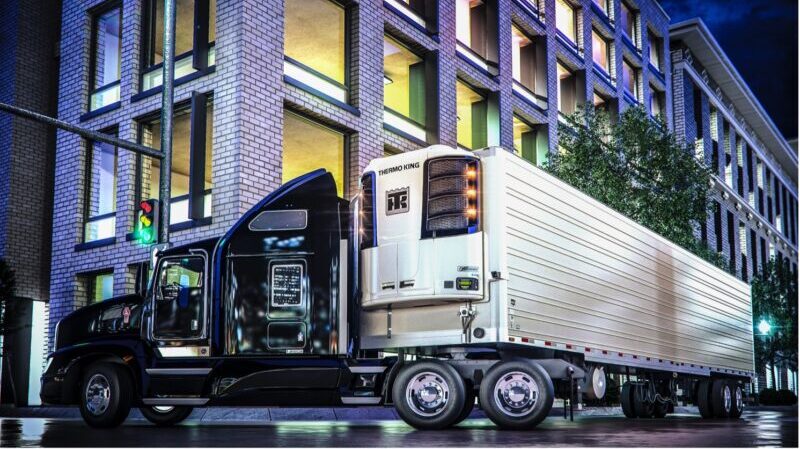In May, Trane Technologies unveiled its latest environmental, social, and governance report, outlining how it had set, met and succeeded several bold sustainability targets.
At the heart of the report was the idea of taking bold leadership to help solve the climate crisis, and inspiring others to make equally ambitious commitments.
As a climate innovator that manufactures heating and cooling technologies, like heating, ventilation, and air conditioning and cold chain solutions, Trane Technologies has a duty to align its operations with global climate goals, and the company is taking that further by directly aligning its strategy to its sustainability commitments.
Its report, titled “Transform Tomorrow, Today,” explains how sustainability is a driver of performance, rather than an obligation, allowing the company to reduce operational emissions by 25%, water usage in water-stressed regions by 18%, customer carbon emissions by 50 million metric tons, and achieve zero waste to landfill at 54% of its manufacturing sites.
“Sustainability has long been at the core of our strategy,” wrote Dave Regnery, Chair and CEO of Trane Technologies, in a letter to stakeholders.
“Nearly ten years ago, we led the industry transition to low-global warming potential refrigerants. We established our first set of climate commitments, and exceeded them two years early in 2018. Since then, our ambitions and actions have grown, with significant progress toward our bold 2030 Sustainability Commitments,” he added.
Backed by science and rigour
The strategy to achieve these goals continues to be twofold: set science-based targets that inform product and operational strategies and rigorously assess and reduce product emissions.
Trane Technologies’ commitment to the former was exemplified in May when the company’s climate goal – namely to reach net-zero greenhouse gas emissions across its value chain by 2050 from a 2019 baseline – was validated by the Science Based Targets initiative (SBTi), a coalition of the Carbon Disclosure Project, the United Nations Global Compact, the World Resources Institute and the World Wide Fund for Nature.
This made the company the first in its industry, and one of only 11 companies in the world to have achieved that level of confirmation at the time of announcement.
In addition to the 2050 net-zero goal, the company also has a vision for 2030, by which time – if commitments are met – there will be a one billion metric tonne reduction in the carbon footprint of its customers.
“The Gigaton Challenge is the largest science-based climate commitment related to product use emissions,” said Executive Vice President and Chief Technology and Sustainability Officer Paul Camuti, adding, “we believe in this commitment because of the collective action across our entire enterprise.”
Trane Technologies is doing this through its second strategic step, calculating and reducing product emissions, with some of the most rigorous standards for how to measure impact.
The company calculates the total emissions generated by every product sold, using an equation based on the sum of its annual electricity (including local grid factors), fuel, and refrigerant emissions multiplied by its expected lifetime. The emissions of every product in a year will then be compared to those generated by products sold in the project’s baseline year of 2019.
“We made the conscious decision to set 2019 as our baseline year, rather than including our achievements from the past five or 10 years, because the planet needs our industry to change now,” said Camuti. “Our ambition is to make a significant impact as quickly as possible.”
Importantly, the reduction is externally assured and contributes to the company’s Scope 3 science-based target and ultimately the 2030 near-term goal.
“We exceeded or met our annual targets for nearly all our 2030 Sustainability Commitments, demonstrating tangible progress on our glidepath toward significant reductions in carbon emissions, energy use, and waste and water, while increasing representation of women in leadership, and workforce diversity reflective of our communities,” said Regnery.
“Through the power of our people, we continue to innovate, take bold action and transform the world for a better tomorrow.”
Trane Technologies Notification on Forward-looking Statements
This article includes “forward-looking statements” which are statements that are not historical facts, including statements that relate to our net-zero carbon emissions targets and our other sustainability commitments. These forward-looking statements are based on our current expectations and are subject to risks and uncertainties, which may cause actual results to differ materially from our current expectations. Such factors include, but are not limited to, changes in laws and regulation, global economic conditions, the outcome of any litigation, our ability to develop new products and services and the acceptance of these products in the markets that we serve. Additional factors that could cause such differences can be found in our Form 10-K for the year ended December 31, 2021, as well as our subsequent reports on Form 10-Q and other SEC filings. We assume no obligation to update these forward-looking statements.
This post was sponsored by Trane Technologies. See our editorial guidelines for what this means.
